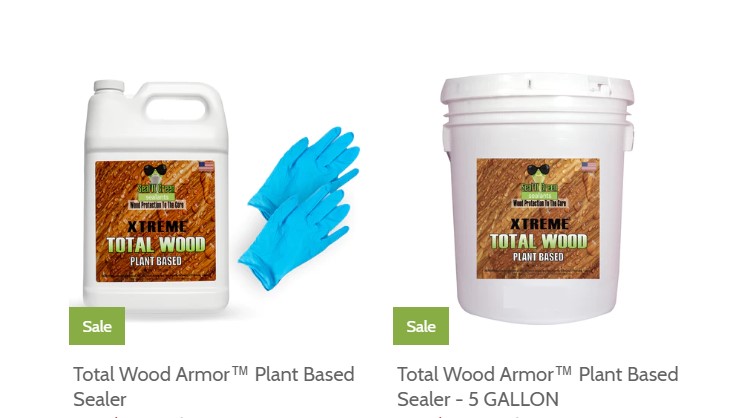Maintaining the beauty and durability of your deck requires the right products and techniques. Whether your deck is made of natural wood or composite materials, using the appropriate sealer can make a significant difference in its appearance and longevity. In this article, we will discuss the key differences between clear wood sealer and composite deck sealer, helping you determine the best option for your deck’s needs.
The Role of Clear Wood Sealer in Deck Maintenance
A clear wood sealer is a transparent, protective coating designed to penetrate the surface of natural wood, safeguarding it against moisture, UV rays, and other environmental factors. Unlike stains that add color to the wood, a clear wood sealer preserves the wood’s natural appearance, making it an excellent choice for those who want to highlight the wood’s natural grain and texture.
Benefits of Clear Wood Sealer
One of the primary benefits of using a clear wood sealer is its ability to prevent water damage. Water is one of the most significant threats to outdoor wood structures, as it can lead to rot, warping, and mildew growth. By sealing the wood’s pores, a clear wood sealer prevents water from penetrating the surface, reducing the risk of these issues.
Another advantage is the UV protection offered by many clear wood sealers. Exposure to the sun’s UV rays can cause wood to fade, discolor, and lose its natural beauty over time. A clear wood sealer with UV inhibitors helps to protect the wood from these effects, keeping it looking fresh and vibrant for longer.
Understanding Composite Deck Sealer
Composite deck sealer is specifically formulated for use on composite decking, which is a blend of wood fibers and plastic. While composite decking is known for its durability and low maintenance, it still requires protection to maintain its appearance and structural integrity. A composite deck sealer provides a protective barrier that helps to prevent fading, staining, and other forms of damage.
Advantages of Composite Deck Sealer
One of the main advantages of using a composite deck sealer is its ability to protect composite decking from UV damage. Composite materials can fade over time when exposed to the sun, resulting in a less vibrant appearance. A quality composite deck sealer contains UV inhibitors that help to prevent this fading, ensuring that your deck retains its color and beauty for years.
In addition to UV protection, composite deck sealers offer resistance to stains. Composite decking can be susceptible to stains from food, beverages, and other outdoor elements. By applying a composite deck sealer, you create a protective layer that makes it easier to clean and maintain your deck, preventing stains from setting in.
Comparing Clear Wood Sealer and Composite Deck Sealer
When it comes to choosing between a clear wood sealer and a composite deck sealer, the decision largely depends on the material of your deck and your specific maintenance needs.
If your deck is made of natural wood, a clear wood sealer is the best choice. It not only enhances the wood’s natural beauty but also provides essential protection against water and UV damage. This type of sealer is ideal for those who want to preserve the natural look of their wood deck while ensuring its durability.
For composite decks, a composite deck sealer is the most suitable option. It is formulated to meet the unique needs of composite materials, offering protection against fading, staining, and other potential damage. This type of sealer helps to maintain the appearance and longevity of your composite deck, making it a wise investment for long-term maintenance.
Tips for Applying Clear Wood Sealer and Composite Deck Sealer
Proper application is key to maximizing the benefits of both clear wood sealer and composite deck sealer. Here are some tips to ensure the best results:
- Clean the Surface: Before applying the sealer, make sure the deck is clean and dry. Remove any dirt, debris, or previous coatings to ensure proper adhesion.
- Apply Evenly: Use a brush, roller, or sprayer to apply the sealer evenly across the surface. Follow the manufacturer’s instructions regarding the number of coats and drying times for optimal results.
- Allow Adequate Drying Time: After applying the sealer, allow it to dry completely before using the deck. This ensures that the sealer has fully cured and is providing the maximum level of protection.
- Reapply as Needed: Depending on the level of exposure and foot traffic, you may need to reapply the sealer periodically. Regular maintenance will help to preserve the appearance and integrity of your deck.
Conclusion
Selecting the right sealer for your deck is crucial for maintaining its beauty and longevity. Whether you are working with natural wood or composite materials, using the appropriate sealer can provide essential protection against the elements. A clear wood sealer is ideal for preserving the natural look of wooden decks, while a composite deck sealer is specifically designed to protect composite decking from fading, staining, and other forms of damage. By understanding the benefits and proper application techniques for each type of sealer, you can ensure that your deck remains in excellent condition for years to come.











